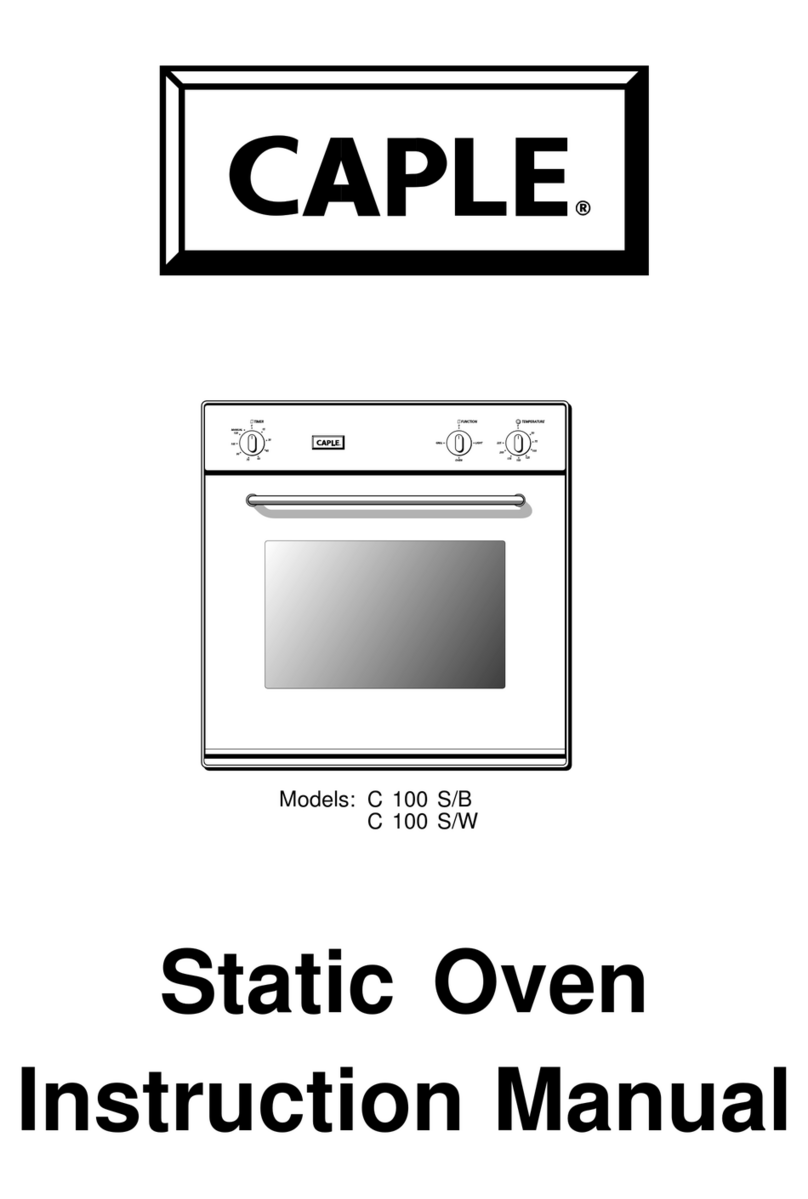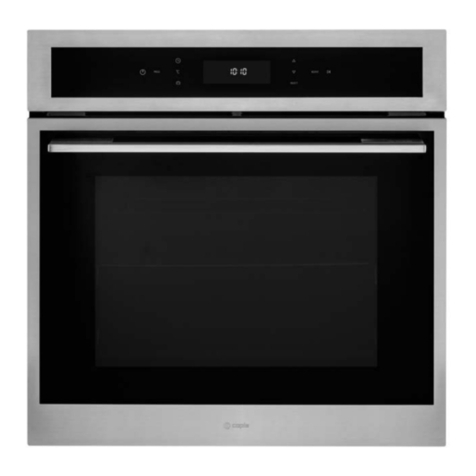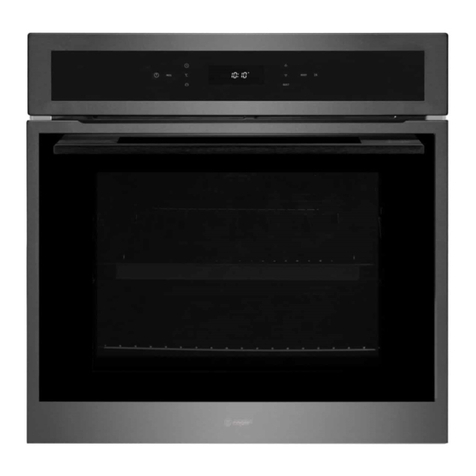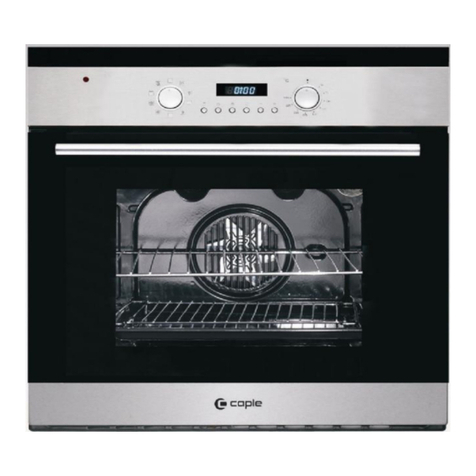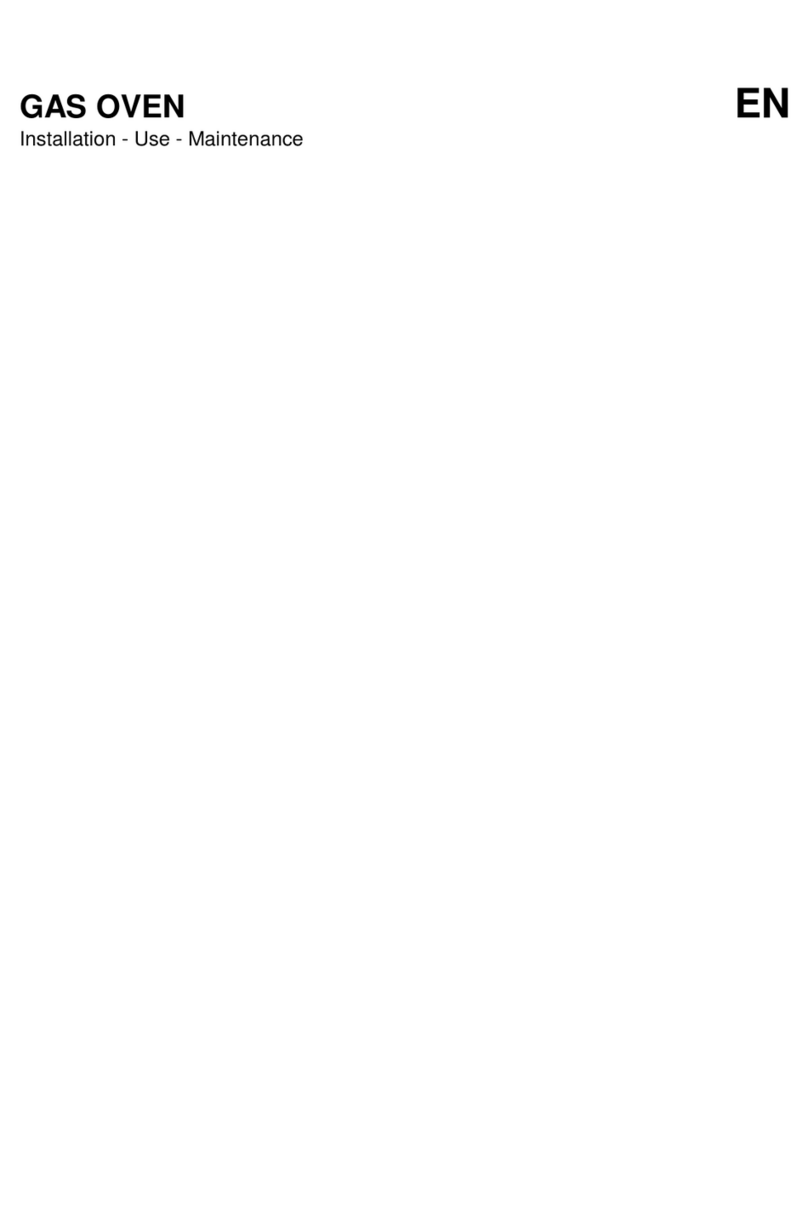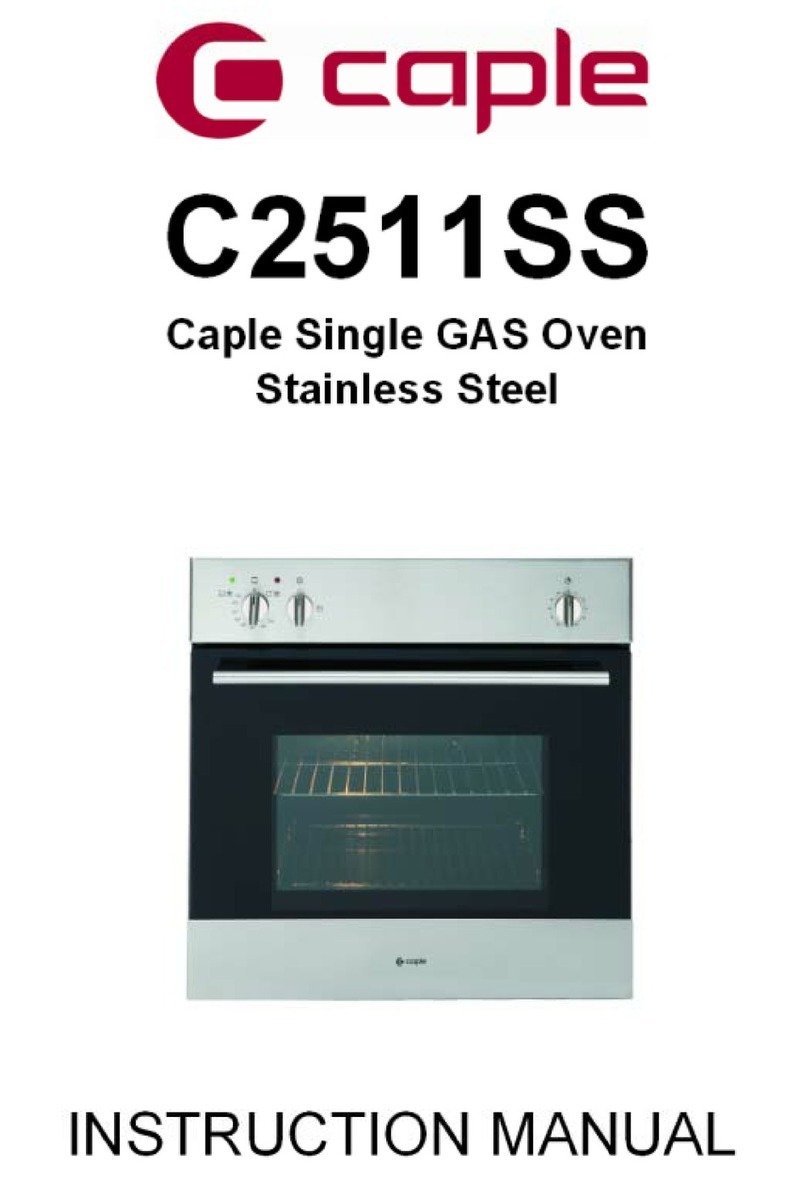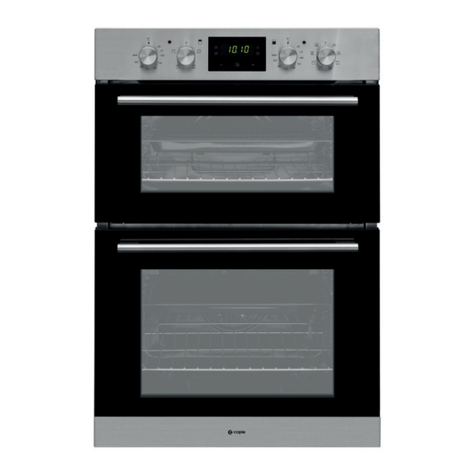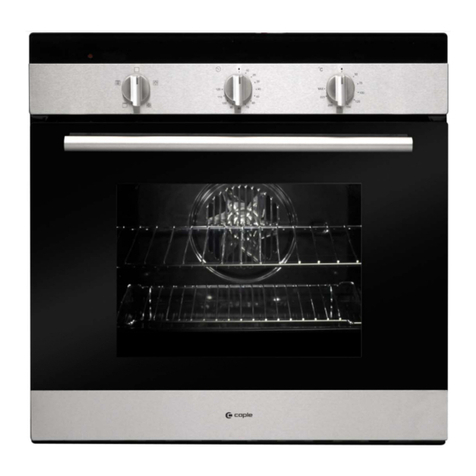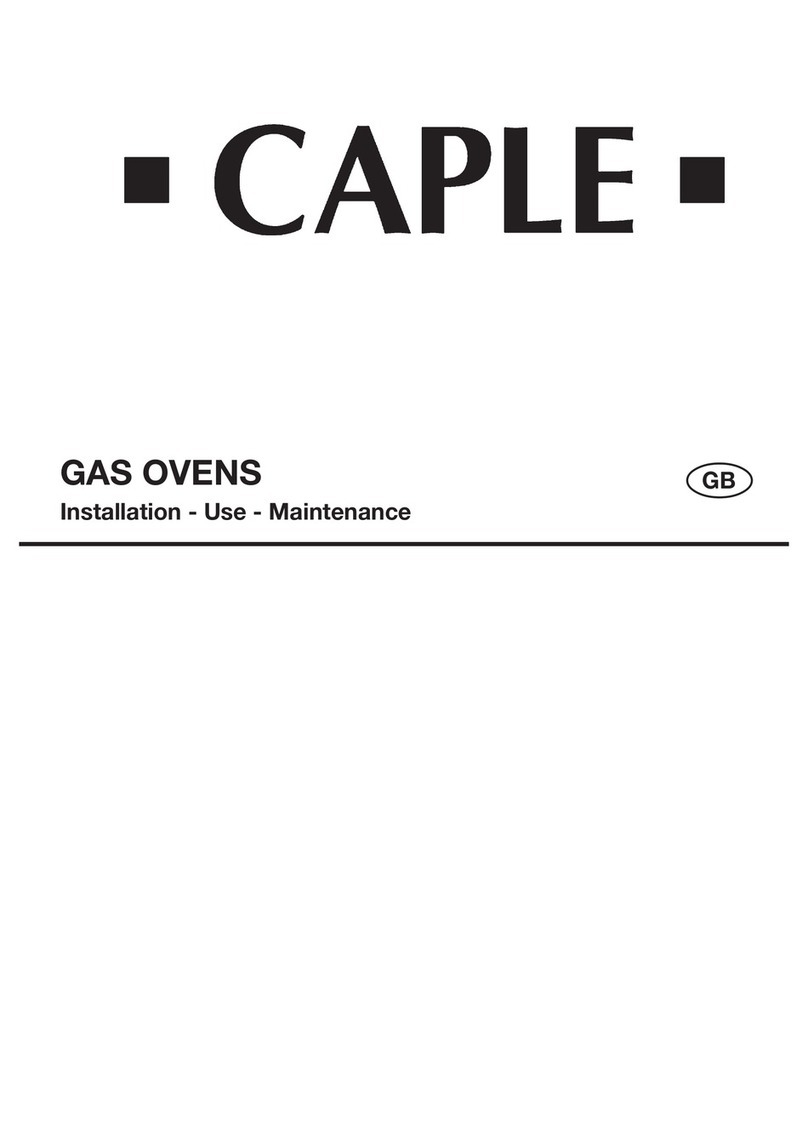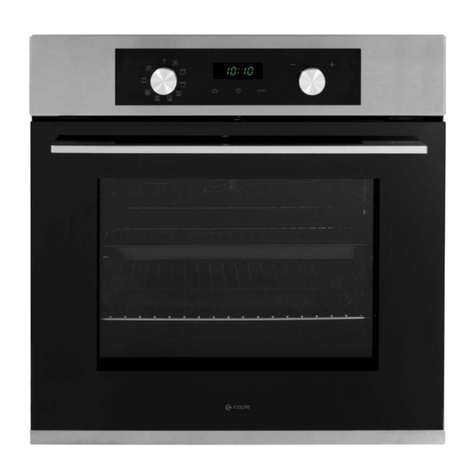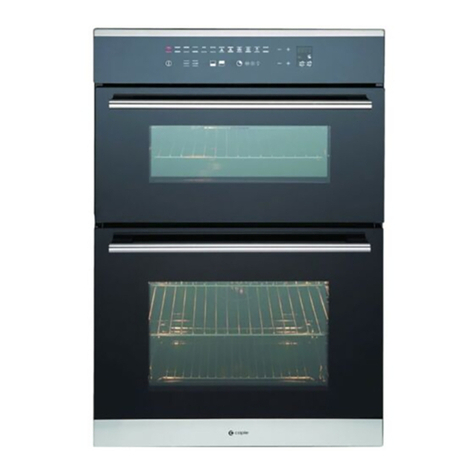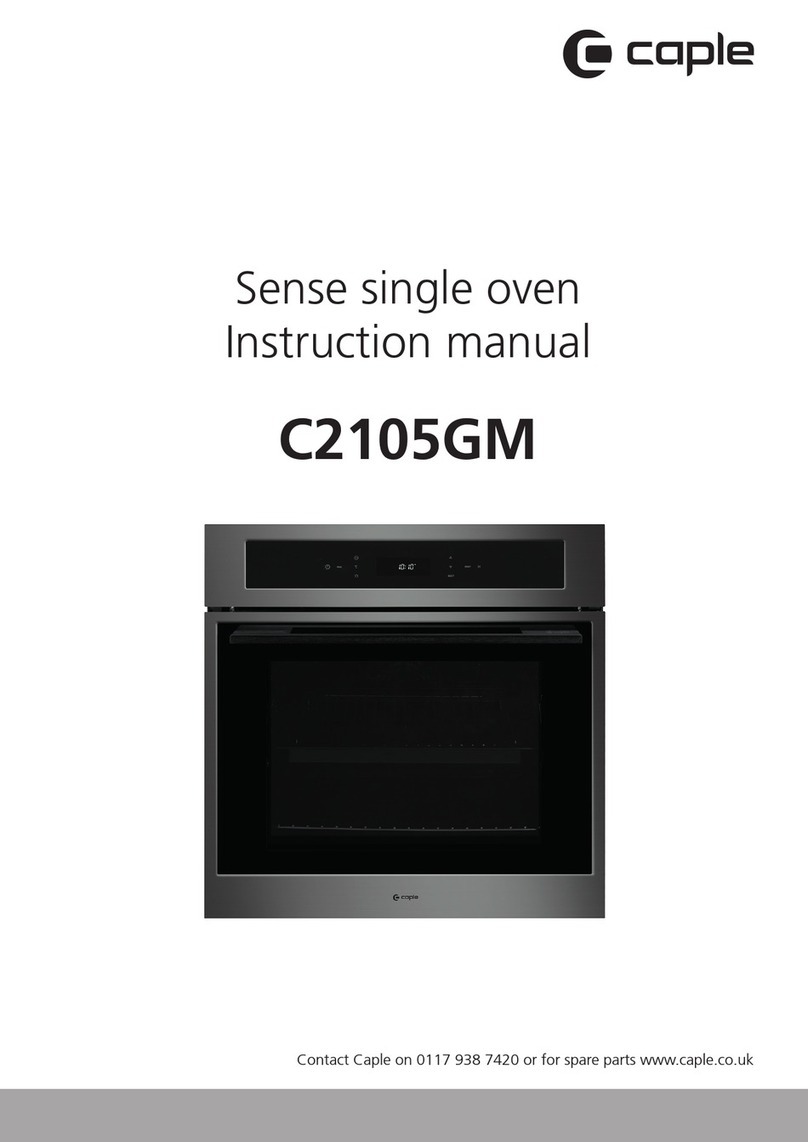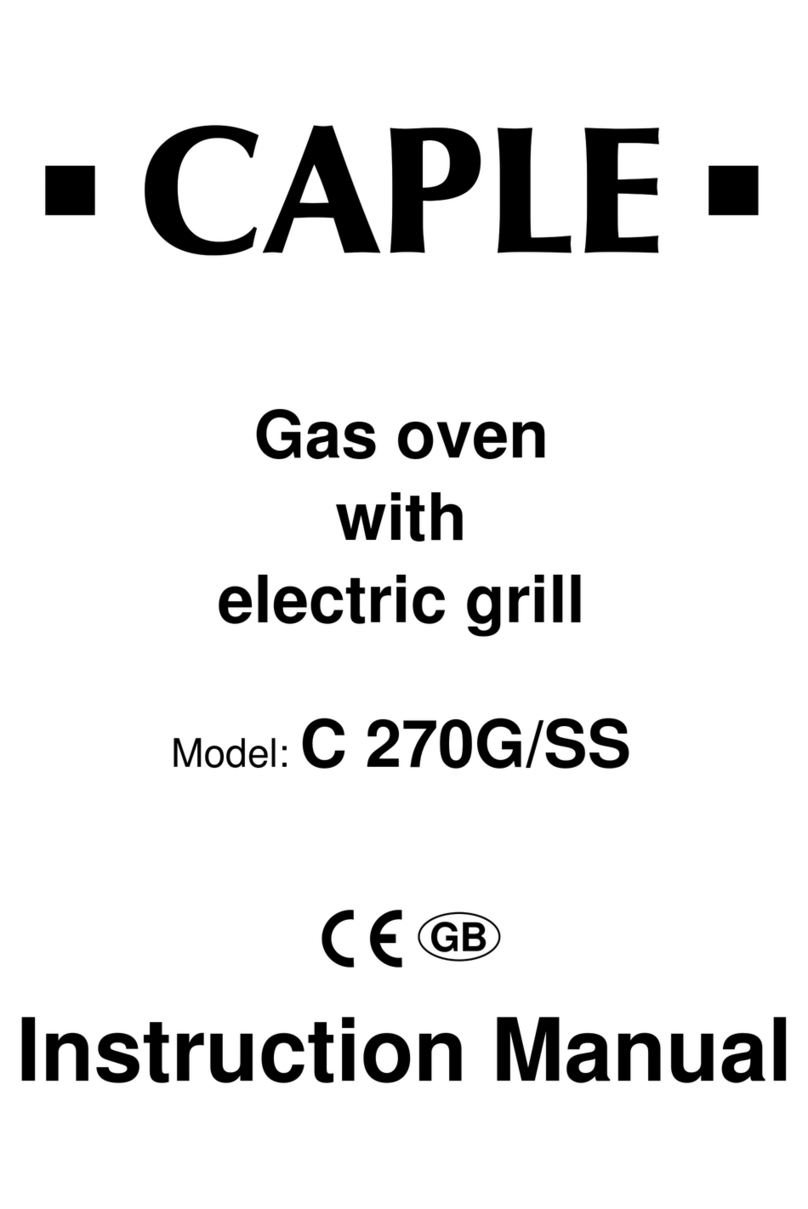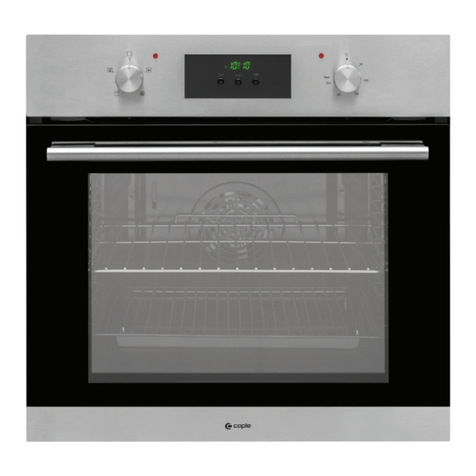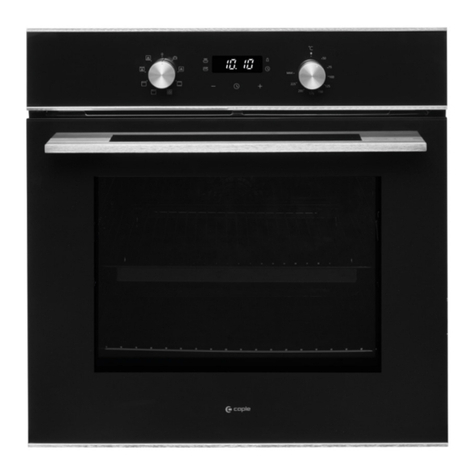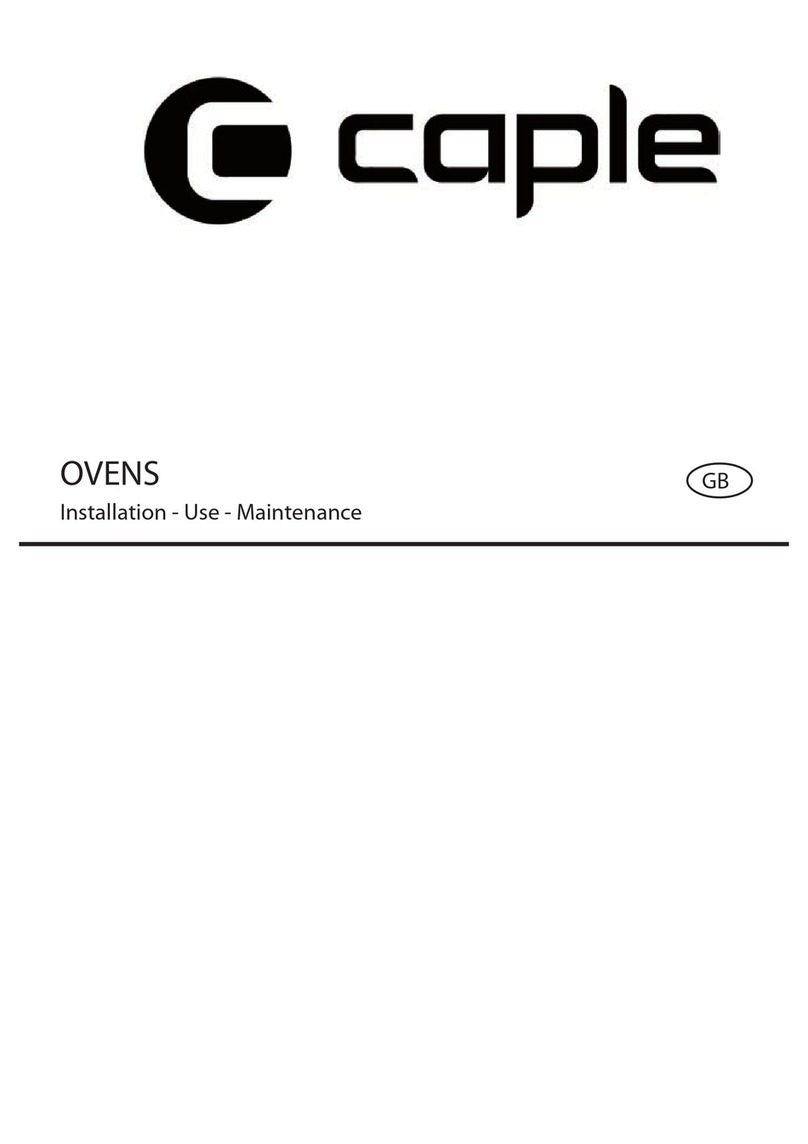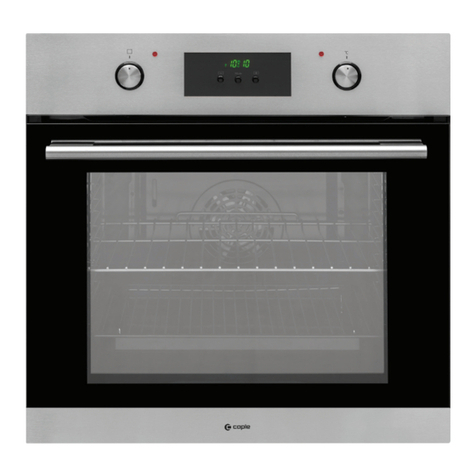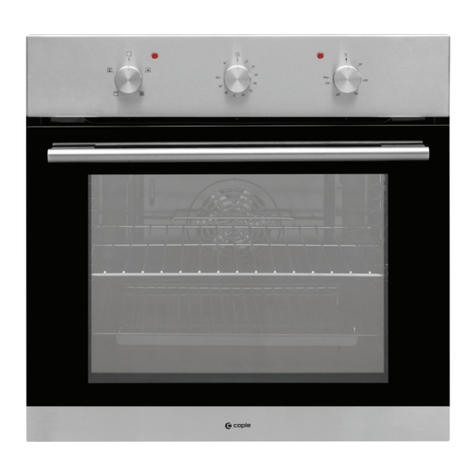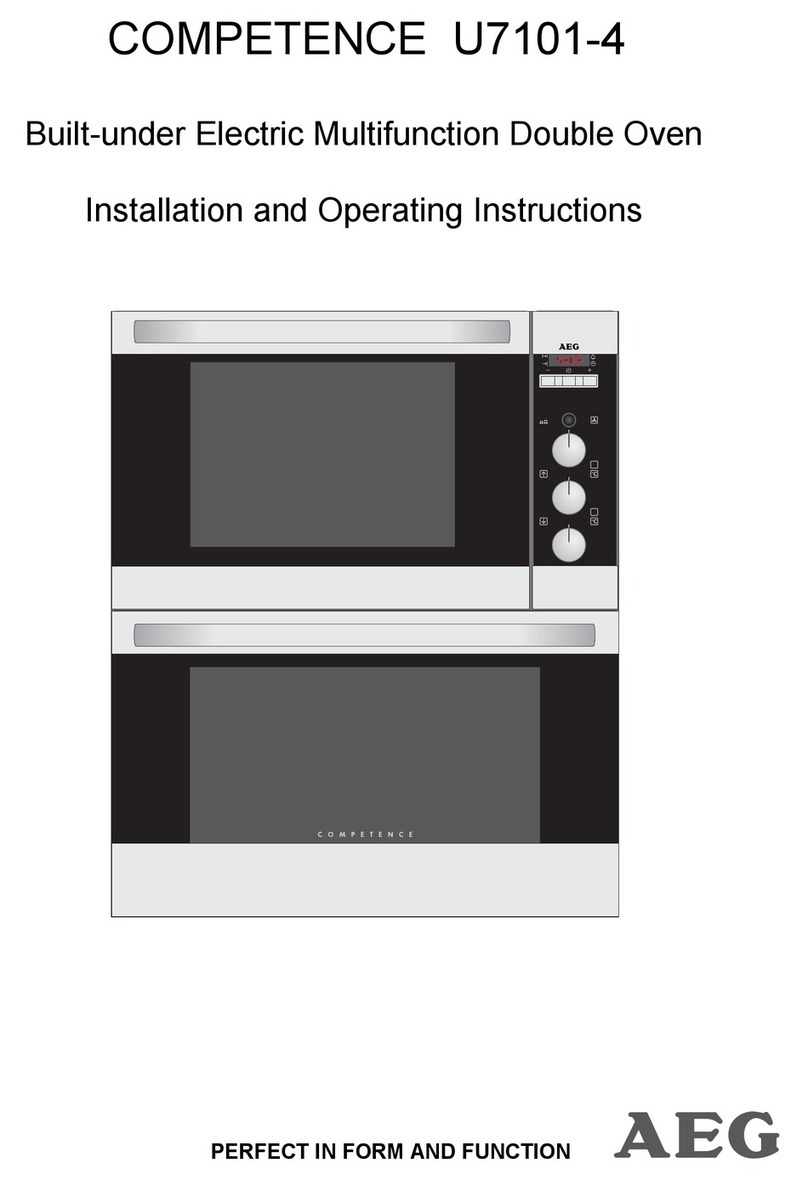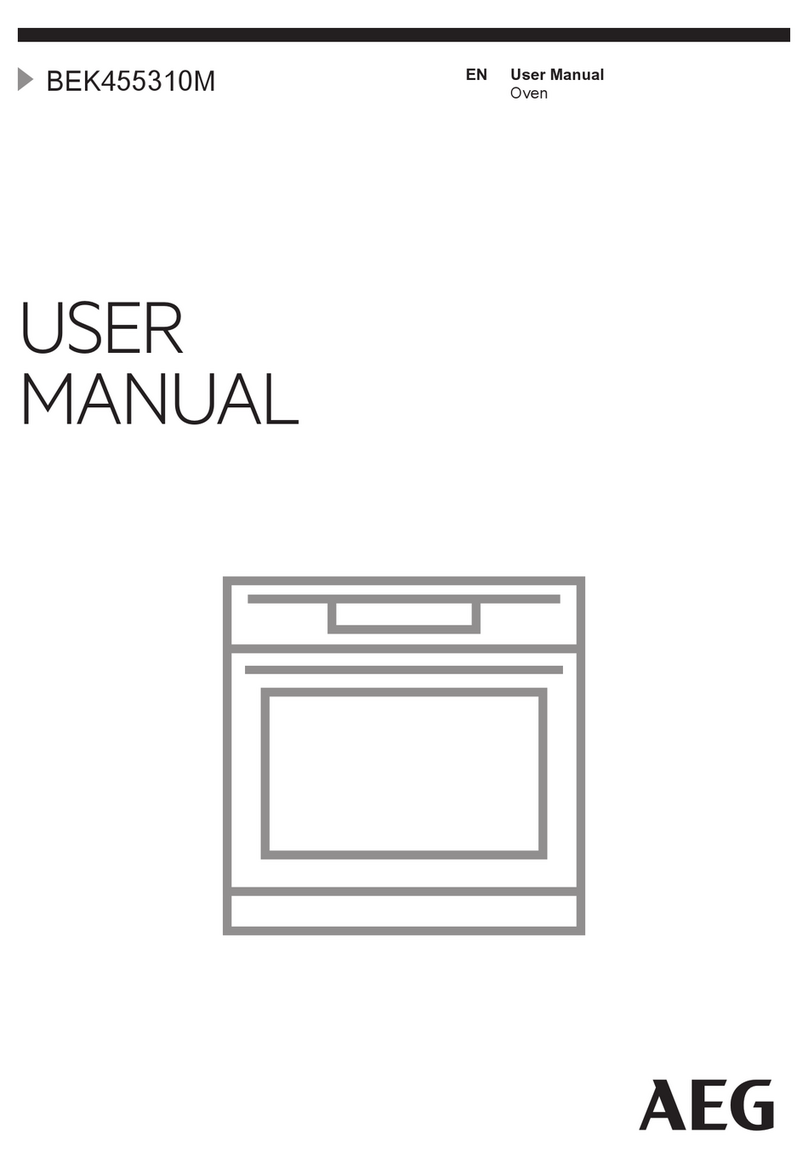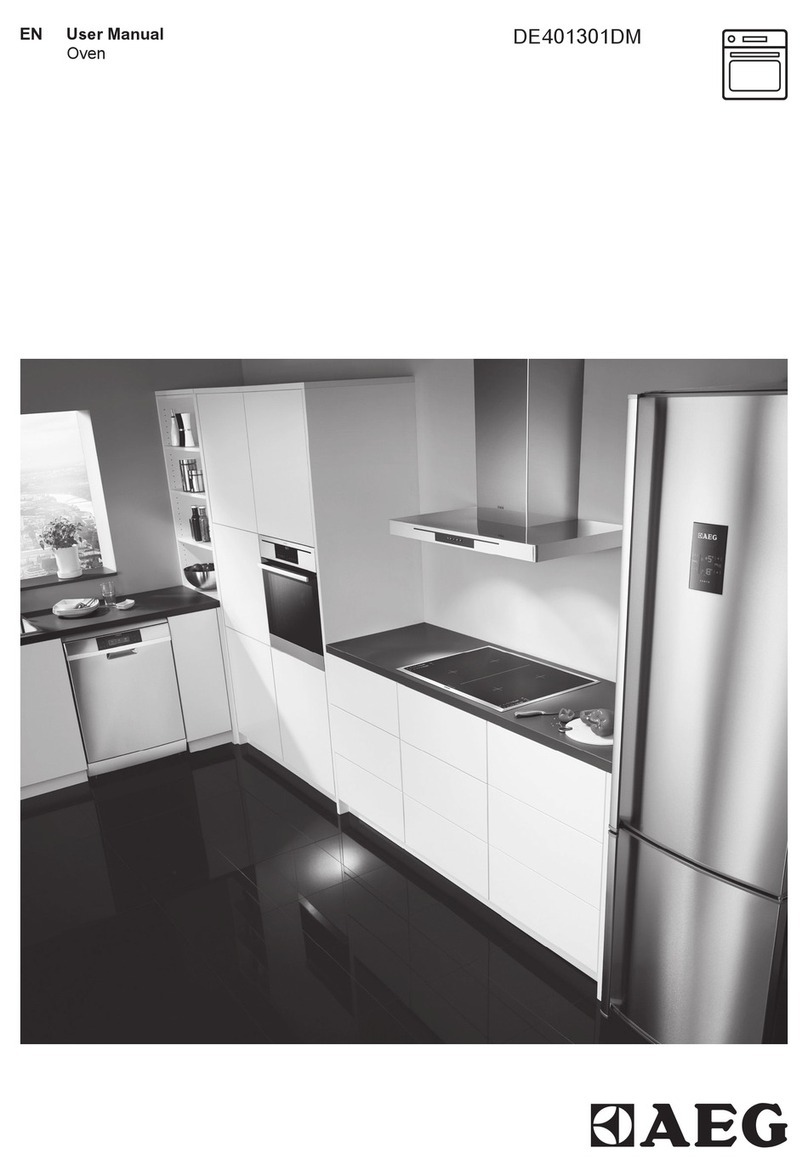8
Cooking in a Conventional
Top Oven
The oven has two heating elements, one
on the base and one on the roof of the
cooker.
Hot air rises, so the top of the oven is
always the hottest.
The temperature in the middle of the
oven is maintained at the temperature
set by the control knob, and is slightly
hotter above and cooler below.
In a conventional oven, dishes requiring
different temperatures can be cooked in
the oven at the same time - e.g. roast
beef and Yorkshire pudding.
Always pre-heat a conventional oven
before use.
The oven indicator light will go out when
the required temperature is reached.
Do not open the oven door during
cooking unless absolutely necessary.
IMPORTANT: Drip trays, baking trays
etc. must not be left on the base of the
oven as this could damage the
appliance.
Cooking in a Main Fan Oven
The fan is situated on the back wall of
the oven.
The heating element encircles the fan,
and the fan forces this heat into the
oven, through the sidewalls, creating a
more even temperature than a conven-
tional oven.
The moving hot air surrounds the food
and penetrates it more quickly than in a
conventional oven.
The oven can be filled with foods all
requiring the same cooking temperature.
Subtract 10 minutes per hour for every
dish requiring a conventional cooking
time of more than one hour, and to
reduce the heat by 10-20°C; the hotter
the oven, the more heat can be reduced.
Generally, there is no necessary to pre-
heat a fan oven.
However, pre-heating for 5 minutes
ensure the best results.
When the fan is turned on and the
temperature control set is at 0°C, the
oven can be used for defrosting food.
This is ideal for gelatin based dishes and
softening ice-cream - a microwave oven
is much too strong for these dishes.
Proving yeast based dishes is also
speeded up this way.
If the oven door has been opened, the
fan oven quickly regains its temperature
once the door is closed.
How To Use Your Oven
Oven - C 302
